Animal Heroes home page
Animal Heroes 2nd edition 2017
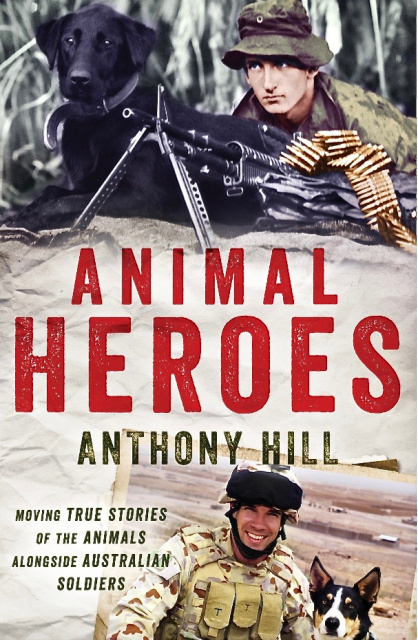
Like any proud parent I must say that I'm thrilled with the new edition of Animal Heroes. The new book has twenty-nine stories – eight more than the first edition, plus several updates.
The cover is excellent I think – and I hope you feel the same – for it still has an affinity with the first edition.
The Vietnam War photo of Norm Cameron and his tracker dog Tiber has been shifted from the lower to the upper half of the design, and the colours are similar.
But it is undeniably its own work: contemporary – pitched at an adult readership – and very much up to date.
The bottom photo shows the explosive detection dog Herbie, killed in Afghanistan with his handler Sapper Darren Smith and mate Sapper Jacob Moerland. Darren was the first Australian EDD handler to die in combat, though ten military working dogs were killed in the Afghanistan theatre from 2006 to 2013.
The photo shows Herbie in country with Major Carl Miller.
New Animal Heroes stories
I’ve written eight new stories for the second edition and brought several others up to the present. All the other favourite tales remain (apart from a few of the shorter anecdotes that needed the photographs to accompany them on the page).
You’ll be interested to know, for instance, that the mascot eagle Trooper Courage (who absconded) has now been promoted to Warrant Officer Class 2 – as has his friend at Townsville’s Billabong Sanctuary, the crocodile known as Snappa, still guarding her patch after nearly thirty years
In 2009 the explosive detection dog Boris died, at the age of 15, after a long and useful life. Boris came to the launch of the first edition with his handler, Lee Doyle, and of course the old dog stole the show. And in 2016 a bronze statue was unveiled in the Victorian town of Corryong to that other celebrated animal hero, Horrie the Wog Dog.
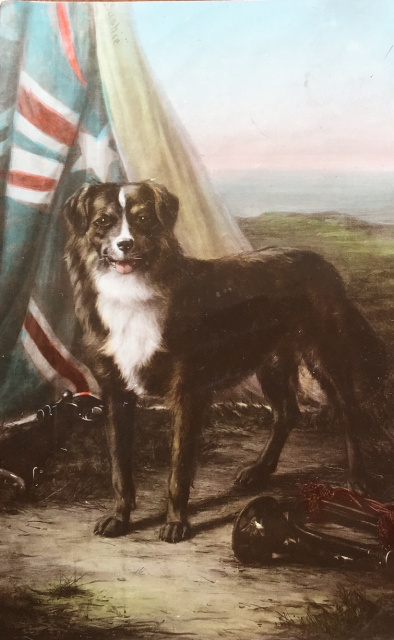 Among the new stories are a couple from the colonial wars.
Among the new stories are a couple from the colonial wars.
One concerns a sad white donkey brought home as their only war trophy by the NSW soldiers who went to The Sudan in 1885, and which ended its days at Duntroon, the site of Royal Military College in Canberra, around 1913.
The other is about Australia’s first official war dog – a black and white collie-cross called Bushie, who was taken as a mascot to the Boer War in 1900 by the NSW Bushmen’s Contingent.
Bushie’s portrait was painted by the artist Wollaston Thomas not long before the Contingent left.
He was presented as a gift to Queen Victoria shortly before she died. And apparently he ended his days in the royal kennels at Osborne House.
Cocky, Willy, Pedro & Co.
I came across several really splendid comic yarns involving our animal heroes, which do so much to provide relief from the stress and discipline of military life. And I was glad of the opportunity to include them in the new volume.
There was a cockatoo given to a convalescent home in Melbourne to entertain soldiers recuperating after their return from the First World War. Cocky’s bad behaviour and worse language certainly cheered up the men – though it so shocked the nurses they couldn’t repeat his words even years after the event.
The former Chief of Army, Lieutenant-General Peter Leahy, and Sergeant Dave Willis gave me an hilarious tale about a very fat mascot pig called Willy, who was once captured – fed a large bucket of curry and rice – and promptly put all his enemies to flight.
And it was grand to find a place for a story told to me some years ago by the late George Gray concerning his tracker dog, Pedro, who had an infallible nose for aniseed. And put it to good use during a jungle chase in Malaya.
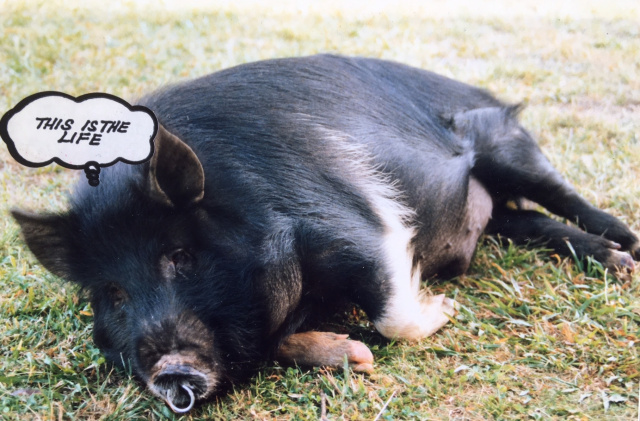
Sarbi and young Ace
The war in Afghanistan is still very fresh in memory. It is, after all, the longest war in which Australians have been engaged. And I was fortunate to be given an interview with David Simpson, who handled one of the most celebrated Australian animal heroes of recent times – the explosive detection dog Sarbi.
You may remember that Sarbi disappeared after a fire fight in Afghanistan in 2008 – it was the same incident that saw Trooper Mark Donaldson win his VC. The dog made worldwide news when she was recovered some fourteen months later having apparently been held as a kind of trophy dog by a local Taliban warlord.
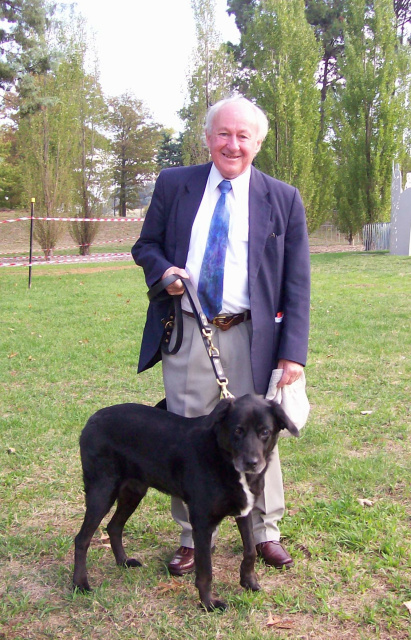 She returned to Australia in triumph; was awarded the RSPCA purple cross (in recognition, David likes to think, of all the military working dogs that served); and retired to live out her days with David and his family.
She returned to Australia in triumph; was awarded the RSPCA purple cross (in recognition, David likes to think, of all the military working dogs that served); and retired to live out her days with David and his family.
Sarbi died a couple of years ago, and has now been mounted and put on display at the Australian War Memorial in Canberra.
David spoke to me about Sarbi’s background – the detailed recollection of the engagement that saw her disappear, in which he was himself wounded several times – and of her life at home after returning in 2010. In my view it’s one of the most poignant and vivid chapters in the book.
Meeting Sarbi in 2013
I had thought to end the story with a few paragraphs about the Explosive Detection Dog training section at the School of Military Engineering, at Holsworthy Barracks in Sydney.
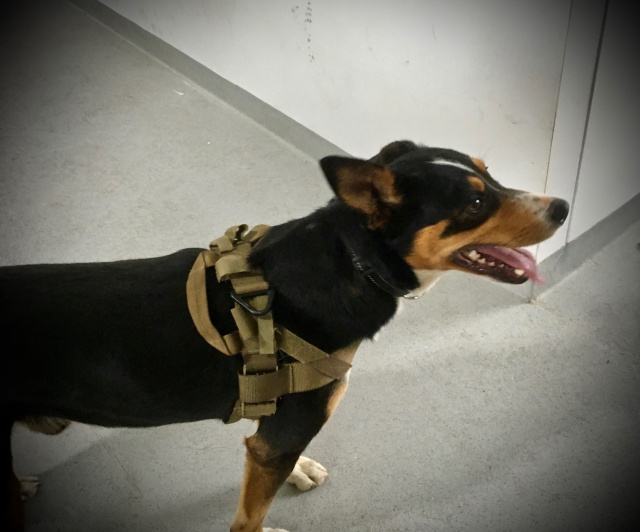 A young dog named Ace, from a nearby pound, was being tested for his potential as an EDD – and the afternoon I visited was Ace’s first day in the search house being taught to detect the scent of an explosive.
A young dog named Ace, from a nearby pound, was being tested for his potential as an EDD – and the afternoon I visited was Ace’s first day in the search house being taught to detect the scent of an explosive.
I won’t spoil the story, except to say that the lesson was so interesting to observe – and the instructing team so very helpful – that I turned it into a separate chapter of its own.
You’ll be glad to know Ace passed his test, and is now a proper EDD in training.